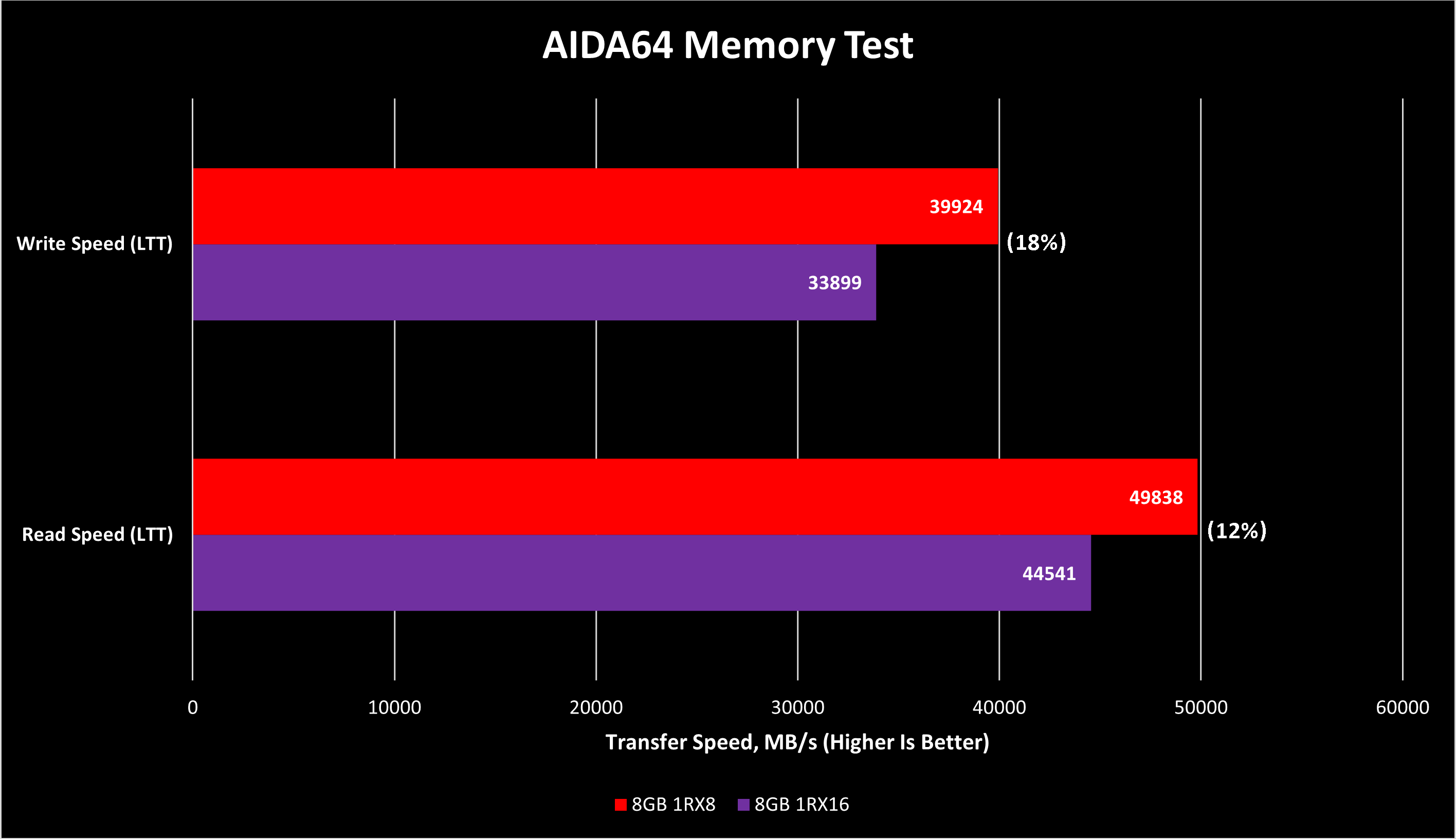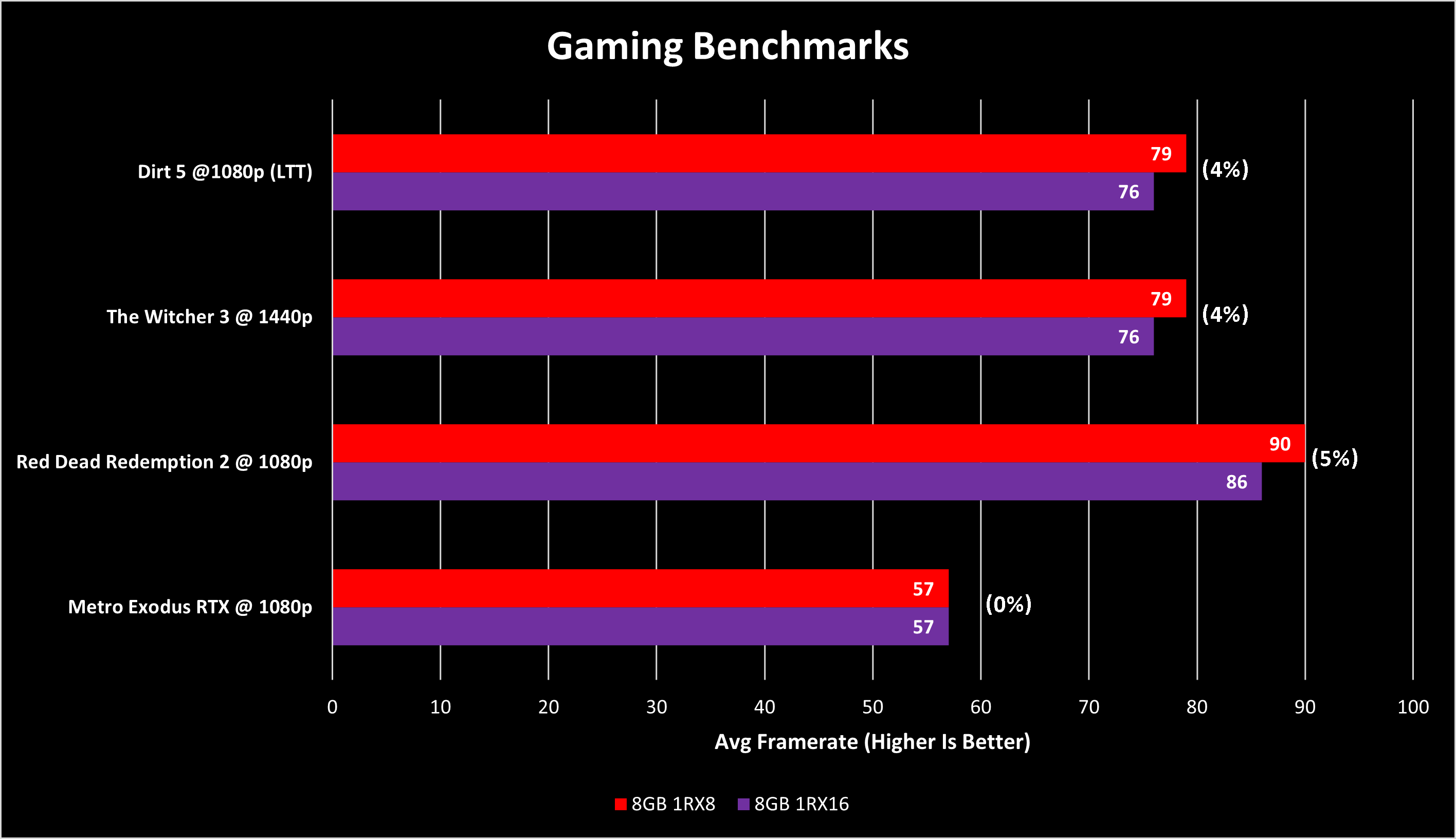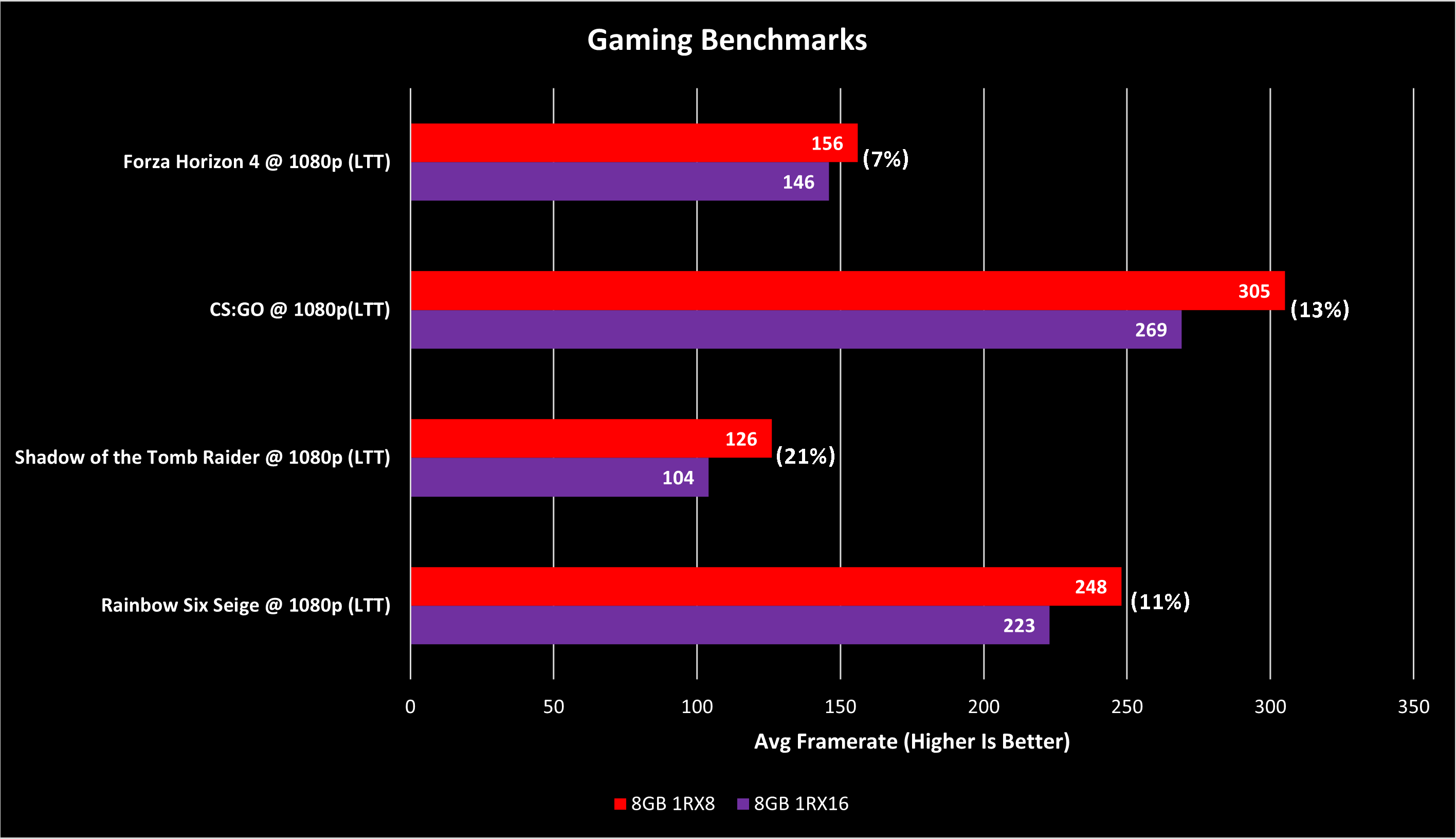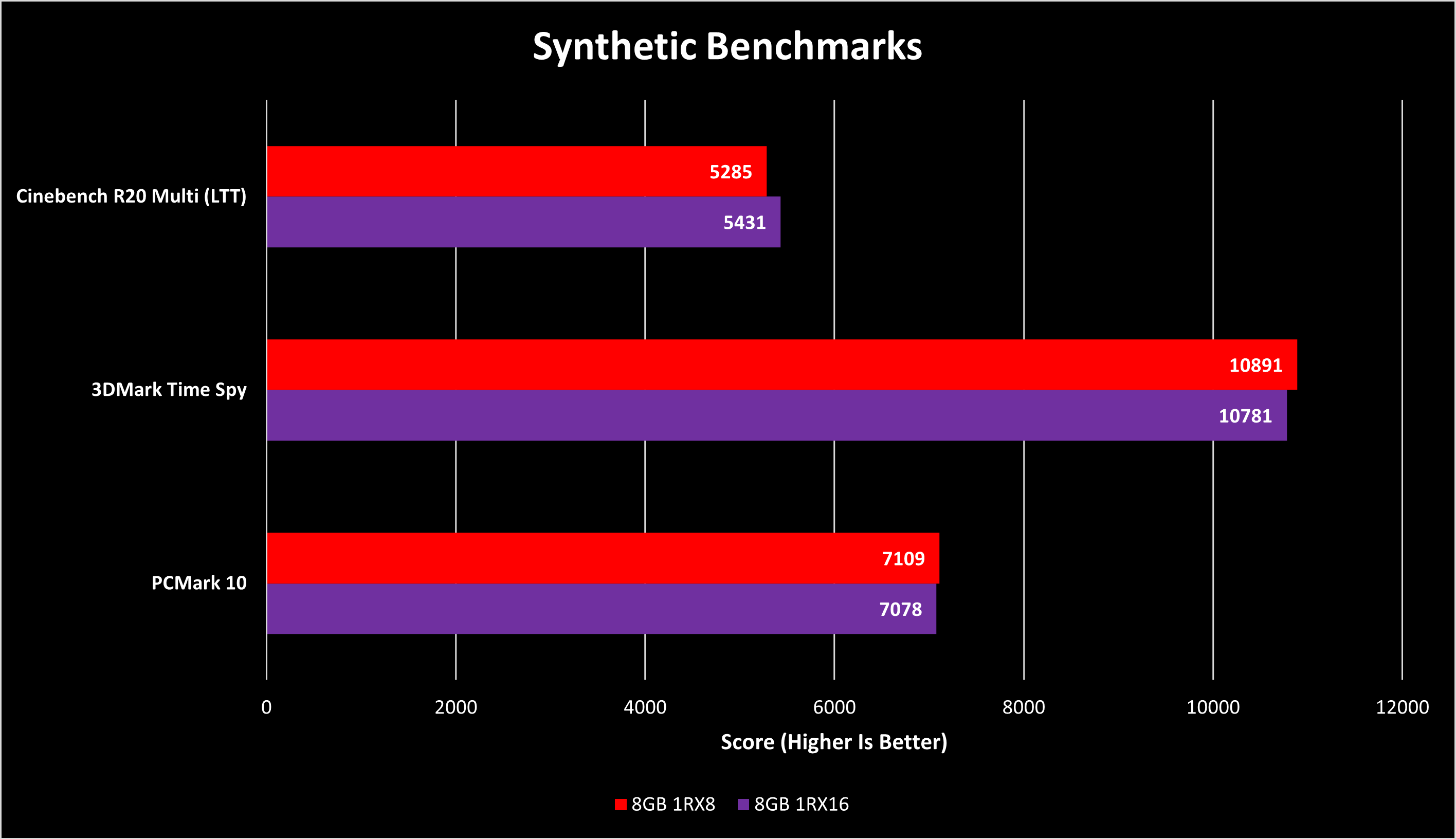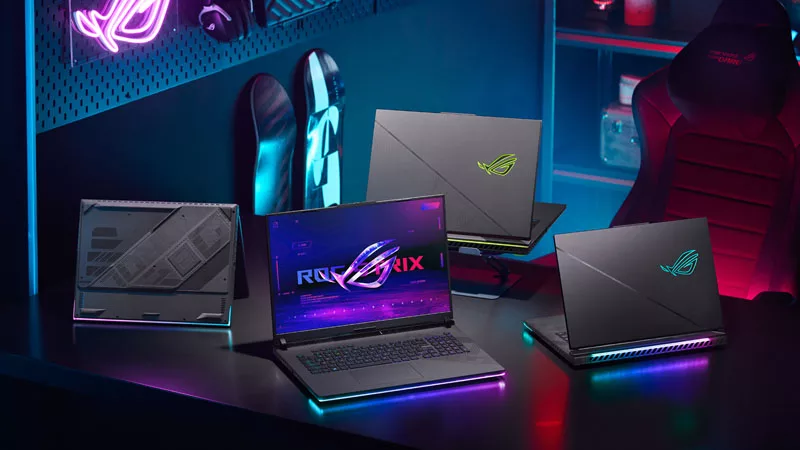RAM chips are changing. Here's how 2021 ROG laptops are affected
The PC industry is currently undergoing a transition from older, less dense DDR4 DRAM chips to newer, higher capacity silicon. As a result, some folks have noticed large performance gains by installing aftermarket memory kits in their ROG gaming laptops. A few specific benchmarks have shown gains as high as 20%, but the actual performance difference is closer to 5% on average.
We'd like to clarify a few points of confusion and explain why our laptops are equipped this way. It's not a "dirty" cost-saving measure, and we aren't trying to hide it—it's a result of this industry-wide move. And while we believe these machines are optimally configured for the best balance of cost, performance, and availability from the factory, we'll show you how to swap in new RAM yourself if you want that small performance boost. Let's dig into the details.
What's the difference between X8 and X16 memory?

The memory configurations in question, pointed out by Jarrod's Tech and Linus Tech Tips with our Strix G15 Advantage Edition gaming laptop, involve two types of RAM: what’s referred to as single rank by 8 (or 1RX8) and single rank by 16 (or 1RX16). 1RX8 sticks of memory have four "bank groups," or groups of physical memory modules, on each stick. 1RX16 sticks, on the other hand, have only two bank groups.
The two configurations affect how the CPU accesses information in memory. In some scenarios, switching from one bank group to another is faster than searching for data on the same bank group—in which case having more bank groups can lead to better performance. Sometimes it's significantly faster, but in many other cases, the performance difference is small, and in other cases, it's actually slower. Here are some example benchmarks:
The largest differences in performance arise in the AIDA64 memory read and write tests run by Linus Tech Tips (republished above with permission). This isn't surprising, because these are synthetic tests of raw system performance, not real-world benchmarks. But apart from Shadow of the Tomb Raider—another odd duck in the group—few other benchmarks reach that same level of performance difference.
If you take a broader look, you'll see smaller numbers. High-FPS shooters like CS:GO and Rainbow Six: Siege show differences of 13% and 11%, respectively, while most other titles have negligible performance differences with single digit percentages. The same goes for productivity benchmarks, which show barely any change when swapping memory configurations (and, in the case of Cinebench, it's actually faster on the new config).
So while some have claimed this is akin to the difference between a GeForce RTX 3070 and 3080, the performance difference is not nearly that large in most scenarios. A better GPU, on the other hand, would net you large performance gains across the board.
Why laptop RAM is changing
For our 2021 laptops equipped with 16GB of memory—that is, laptops with two sticks of 8GB RAM—we launched with 1RX16 DIMMs from the start. This isn't a deceptive cost-saving measure, and we aren't trying to secretly "downgrade" our machines. In fact, this is an industry-wide trend thanks to the ongoing chip shortage, which is reducing the number of 8GB 1RX8 DIMMs in circulation.
As pointed out by the Linus Tech Tips crew, you can still buy 8GB 1RX8 kits at retailers like Amazon and Newegg right now. But those are leftover stock. Since we need a stable supply of tens of thousands of modules, we can't use those 1RX8 sticks in our laptops, because they're no longer available to us in the quantities we require. To ensure more consistent supply, we used 1RX16 sticks in systems with an 8GB+8GB configuration. Our laptops with 32GB of RAM (16GB+16GB) are unaffected, since 16GB DIMMs are more widely available in 1RX8 configurations.
So we decided to ship primarily 1RX16 DIMMs at launch. A few of our laptops may have shipped with 1RX8 memory thanks to inventory draw-down, but most folks are getting the same 1RX16 memory.
To avoid further confusion, we've linked to this explanatory article on the laptop's product page. We want our customers to be able to make as informed a decision as possible, and we regret any confusion this may have caused.
How to swap the RAM in your laptop
If you have a laptop with 1RX16 memory sticks and want to swap it for 1RX8 memory instead, you have a few options. You can either buy some of the remaining 8GB 1RX8 kits available at retail, or you can upgrade to two 16GB sticks instead, which are more widely available in 1RX8 configurations.
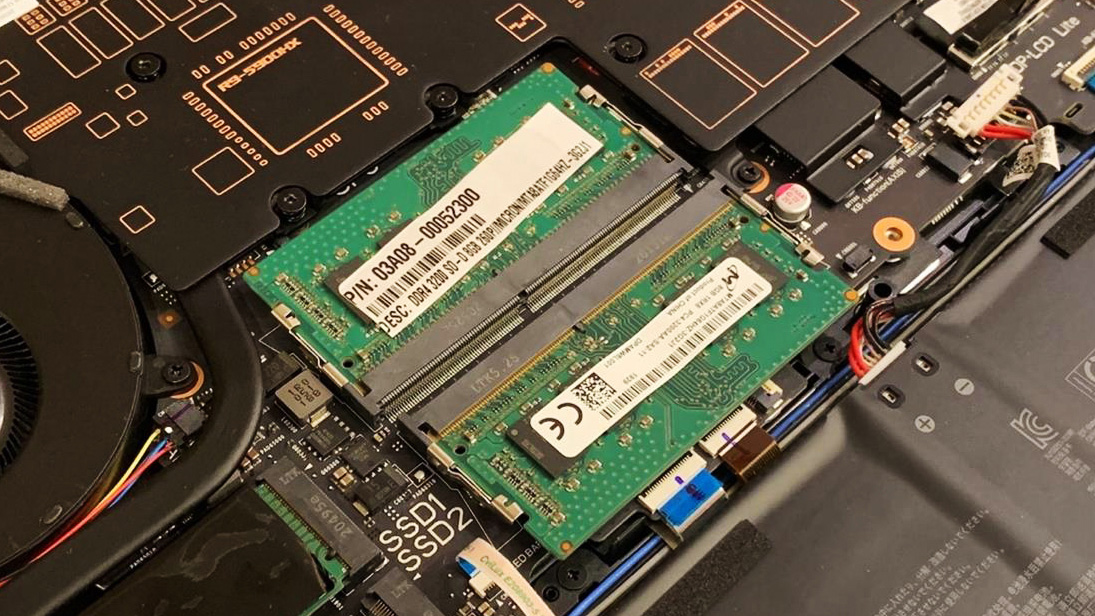
With your RAM sticks in hand, you can use a small Phillips screwdriver to open the bottom case of your laptop, revealing the components inside. Make sure to keep track of your screws—some are longer than others, so grab a piece of paper or a baking sheet and place them in the same arrangement they appear as you unscrew them, to avoid any issues.
Once the bottom case is open, look for the RAM modules, and press the levers on either side to eject them. Replace them with your chosen memory sticks, and close the laptop back up. This should be a simple process on any ROG laptop with user-upgradeable memory, even if you've never opened a computer before—so don't be afraid to dive in.
If you're considering buying an ROG laptop and want to make the most of its performance, we recommend choosing the 32GB option if available, as this will use two 16GB sticks of 1RX8 memory. Contact your favorite retailer and ask them if a 32GB option is available if they don't list one. No matter what you choose, we're confident you'll get great gaming performance on your ROG machine.
